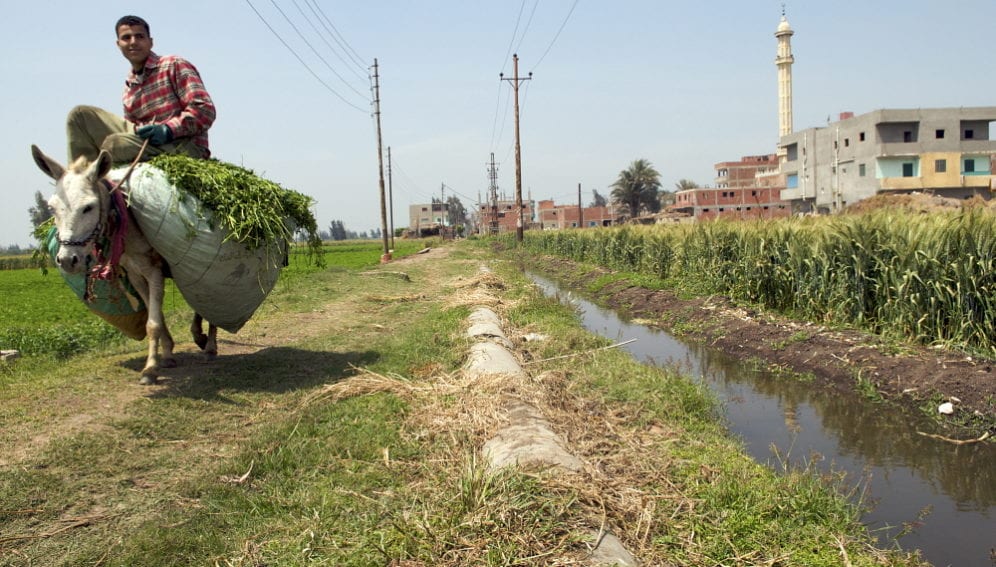By: Ian Randall
Send to a friend
The details you provide on this page will not be used to send unsolicited email, and will not be sold to a 3rd party. See privacy policy.
A 5,000-year-old river could be resurrected to bring sustainable agriculture to one of the planet's rainiest yet driest deserts, according to a study, which proposes an ambitious engineering scheme for Egypt that the country's government is now reviewing.
The desert of the Sinai Peninsula receives the most rainfall of any part of Egypt — around 304 millimetres annually — but most of it is of no benefit to agriculture, instead flowing out into the Mediterranean Sea in flash floods.
Now, researchers from Egypt's Al-Azhar University, and Boston University and the University of North Carolina in the US — writing in a paper published online in Geomorphology this month (15 June) — propose redirecting rainwater in the Wadi El-Arish valley’s drainage area down the river’s former path, away from the sea, to an area where it can be used for irrigation.
"[Our study] reveals the ancient course of the Wadi El-Arish … and provides a new approach to maximise the harvesting of rainwater for establishing sustainable agricultural development in North Sinai," says lead author Mostafa AbuBakr, a visiting scholar at Boston University's Center for Remote Sensing.
The geological record shows that the Sinai region was much wetter between 5,000 and 10,000 years ago. Using satellite radar images to visualise ancient river beds that have since been buried under surface deposits, the team compared the modern day topography with the paths of the ancient river channels from this wetter period.
The river was diverted from its original course when geological uplift formed an arch of stratified rock called an anticline that blocked its path.
"This method of identifying subterranean features by using space-borne radar has been used previously and is an effective imaging tool," says Paul Tregoning, a remote sensing expert from the Australian National University, who was not involved in this study. "The authors show quite clearly the location of what appear to be ancient river beds beneath the anticline that is visible in today's topography."
“Our study provides a new approach to maximise the harvesting of rainwater for establishing sustainable agricultural development”
Mostafa AbuBakr
The river originally led to three ancient lakes in a depression west of Gebel Halal, a mountain in northern Sinai.
"Accessing that depression would allow its stored water to be used for agriculture," says Farouk El-Baz, an author of the paper and director of the Center for Remote Sensing.
To do this, the team propose that a two-kilometre-long and six-metre-deep channel should be dug through the uplifted structure, to divert water back along the river’s previous course. They believe this could redirect enough runoff during flash floods to create 1,400 square kilometres of fertile land in the depression west of Gebel Halal, where surface clays, low groundwater salinity and a near-surface aquifer also offer promise for agriculture.
The team have recently approached the Egyptian government through its Science and Technology Development Fund to further explore this irrigation concept.
The proposed project — which the Egyptian government is now assessing — would involve "a follow-up study to estimate the possibility and the outcomes of surface runoff redirection through a canal and evaluate the consequences of this flow deviation", AbuBakr tells SciDev.Net.
The plan is to create a high-resolution computer model — supplemented with field measurements and geophysical explorations — to construct a detailed hydrological simulation of the diversion to assess its impacts on the environment, local ecosystems and any archaeological sites in the areas around the ancient lakes.
In addition to the potential to support agriculture, redirecting the river flow in this region would help to mitigate the risk of flooding in El-Arish City, the capital of the North Sinai governorate, which lies on the coast at the end of the Wadi El-Arish.














